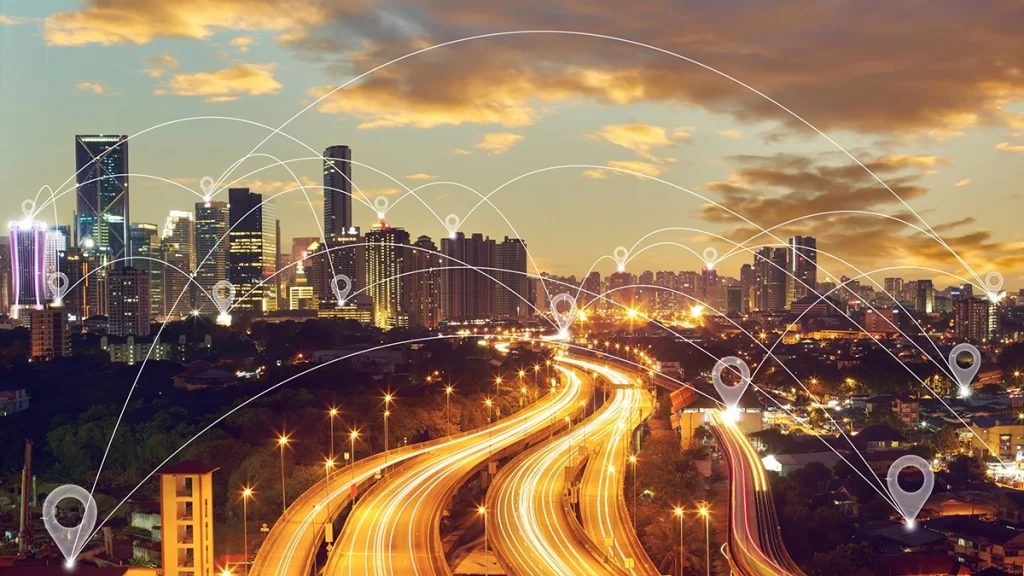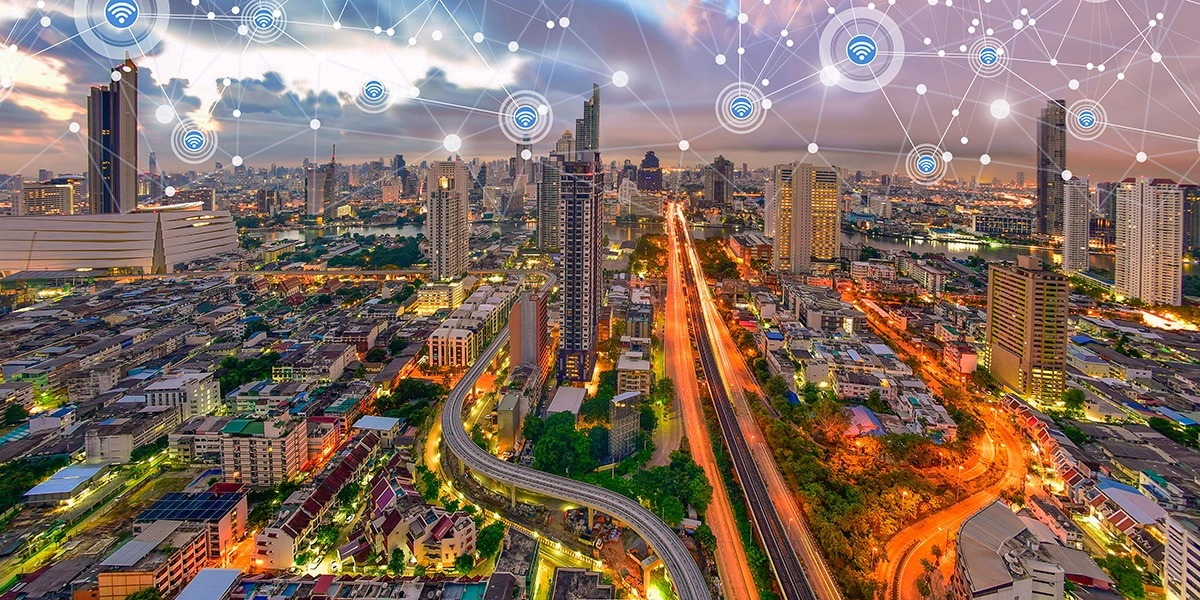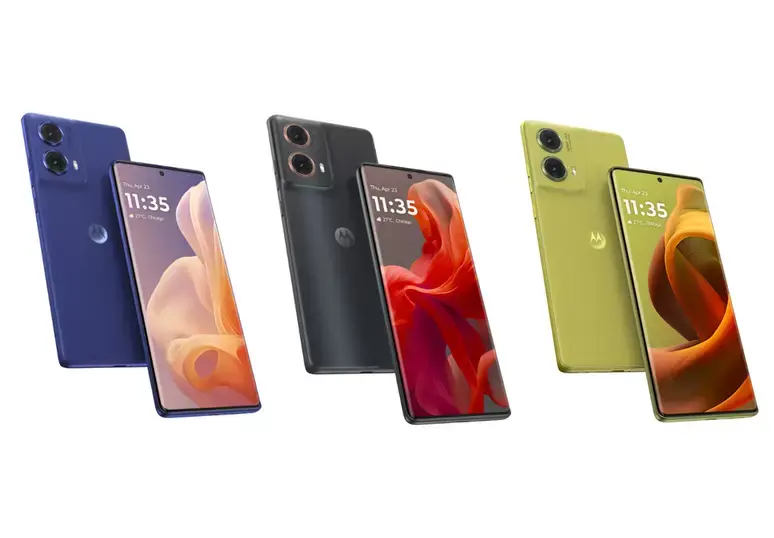Smart cities have emerged in this era of rapid urbanization as a way to increase urban efficiency and enhance the quality of life for residents. By integrating the Internet of Things , cities use technology to optimize resource allocation, make infrastructural management more efficient and develop rational, connected environments. There are numerous benefits to living in smart cities in a world that is becoming increasingly interconnected.
The IoT devices and sensors gather real-time data without human intervention, allowing cities to make accurate data-based decisions and respond quickly to changes. Smart cities driven by IoT technologies are revolutionizing how we live, work, and play, especially when it comes to traffic systems, energy consumption, waste management, and public security. Smart city projects are increasingly essential as urban populations expand.
Thus, the world’s future cities use IoT to produce novel sustainable solutions. Learn more about the potential of smart cities and the thrilling world of IoT integration in our all-encompassing piece on Smart Cities: Integrating IoT for Urban Efficiency.

Benefits of Integrating IoT in Smart Cities
The introduction of IoT into smart cities brings a multitude of benefits.
Firstly, it helps the city to optimize the allocation of resources. By analyzing real-time data, the cities can make better-informed decisions based on data patterns. It would be true regarding the management of traffic flows, energy consumption, waste production, and other areas. Thanks to various sensors and IoT devices, the city will be able to identify weak spots to implement solutions.
Secondly, IoT embedded into the smart city improves the efficiency of infrastructure management. The city can monitor and evaluate the condition of their bridges, roads, buildings, and make decisions proactively. It reduces the amount spent on the crisis-solving and mitigates risks of accidents and emergency situations.
Moreover, with IoT, the city creates more sustainable and green scenarios. It uses energy where it is more used according to its data analysis. A suitable example is a system overseeing the generation and distribution of energy within a city. Additionally, IoT helps with waste removal by creating optimal routs for collectors. That way, the city saves fuel and optimally disposes of the waste.
Case Studies of Successful Smart City Projects
Many cities across the globe have successfully implemented smart city projects. Some cities have shown that it is possible to apply an IoT integration concept and yield tangible results. In Spain, for example, the “Smart City Barcelona” project was established with an objective of using technology to make city life better for residents.
The project involved the installation of sensors in the entire city and monitoring of several indicators such as noise, air quality, and other forms of waste. The indicators were monitored in real time and helped the city to make real-time decision to improve the urbanity of the city. In another city, Singapore has taken a step to make significant changes in the living status of its citizens by integrating IoT in all aspects of city operations. One of its projects was the “Smart Nation”, which is a program that seeks to improve every aspect of the people livelihood .
The state has install IoT devices in all its road to measure live data and ensure traffic flows are optimized. Smart light has also been installed to enhance light when dark and reduce brightness when there is natural light. Such two implementations indicate that integrating IoT in cities has a tangible impact and real-life result. Such integration has therefore resulted s to smart cities, which are sustainable and viable.
Challenges in Implementing IoT in Smart Cities
Despite the immense potential of IoT integration in smart cities, there are several challenges associated with the implementation of an IoT system. Integrating multiple systems and devices poses a significant technical challenge. IoT involves connecting many devices, each with a different set of specifications and protocols. IoT sensors require a standard protocol to ensure that all devices and related identity management systems can communicate effectively. Another challenge regarding IoT implementation is data privacy and security. The vast amount of data generated by IoT sensor technology presents challenges in ensuring the privacy of the data produced.
Without adequate data management policies, unauthorized access could lead to privacy breaches and even cause a wide range of potential cyber-attacks. The next potential barrier to implementing IoT technology is the cost. Multiple prominent cities may not be able to be in charge of the necessary investment in many data centers, sensing units, networks, data analysis research, and server or cloud storage space. Cities need to evaluate potential benefits or return of investment from IoT implementation and attempt their implementations accordingly. unnecessary implementations could be a large waste of limited funding.
The potential combination of all these challenges is a significant barrier to implementing IoT, however the Potential benefits from IoT integration outweigh these combined barriers. With the right initiative, planning, implementation, and funding, prominent cities can overcome almost every barrier and utilize IoT to its full potential.
Key Components of a Smart City Infrastructure
A successful smart city infrastructure relies on several key components that work together to create an interconnected ecosystem. These components include:
- Sensors and IoT Devices: Sensors and IoT devices play a crucial role in collecting real-time data. They can monitor various parameters, such as air quality, temperature, traffic flow, and waste levels. These devices provide the foundation for data-driven decision-making and enable cities to optimize resource allocation.
- Communication Networks: Communication networks, such as 5G, provide the backbone for transmitting data between IoT devices and the central data analytics systems. High-speed and reliable communication networks are essential for real-time monitoring and analysis.
- Data Analytics Systems: The data collected by IoT devices needs to be processed and analyzed to derive meaningful insights. Data analytics systems enable cities to make informed decisions based on real-time data, optimizing various aspects of urban life.
- Centralized Control Centers: Centralized control centers serve as the nerve center of a smart city. These centers receive and process data from IoT devices, monitor the overall urban environment, and coordinate responses to changing circumstances. They enable cities to proactively manage resources and address challenges efficiently.
- Citizen Engagement Platforms: Citizen engagement platforms foster collaboration and participation between residents and the city administration. These platforms enable residents to report issues, provide feedback, and stay informed about ongoing initiatives. By involving citizens in the decision-making process, cities can create a sense of ownership and ensure that smart city initiatives align with the needs and aspirations of the community.
By integrating these key components, cities can create a robust and interconnected smart city infrastructure that enhances urban efficiency and quality of life.
IoT Applications in Urban Transportation
Urban transportation is one of the key areas where IoT integration has significant potential. By leveraging IoT devices and data analytics, cities can optimize transportation systems, reduce congestion, and enhance the overall commuting experience.
One of the primary applications of IoT in urban transportation is traffic management. By collecting real-time data from sensors placed at strategic locations, cities can monitor traffic flow, identify congestion points, and adjust signal timings accordingly. This data-driven approach not only reduces congestion but also improves fuel efficiency and reduces carbon emissions.
IoT also enables cities to implement intelligent parking systems. By using sensors to monitor parking availability, cities can provide real-time information to drivers, guiding them to available parking spots. This reduces the time spent searching for parking, improves traffic flow, and reduces unnecessary fuel consumption.
Additionally, IoT integration in public transportation systems allows cities to optimize routes and schedules based on real-time data. By monitoring passenger flow and adjusting services accordingly, cities can improve the efficiency and reliability of public transportation. This leads to increased ridership, reduced congestion, and a more sustainable urban transportation system.
The integration of IoT in urban transportation holds immense potential for improving efficiency, reducing congestion, and creating sustainable cities of the future with yowestogel.
IoT Applications in Energy Management and Sustainability
Energy management and sustainability are critical aspects of smart cities. IoT integration enables cities to monitor and optimize energy consumption, reduce waste, and promote renewable energy sources.
One of the key applications of IoT in energy management is smart grid systems. By integrating IoT devices with the power grid, cities can monitor energy consumption in real-time, identify areas of high usage, and implement energy-saving measures. Smart meters, for example, provide detailed information about energy consumption, enabling residents to make informed decisions and reduce their energy usage.
IoT also enables cities to implement smart lighting systems. By using sensors to detect ambient light levels, cities can adjust the brightness of streetlights and other public lighting systems. This not only reduces energy consumption but also enhances safety by ensuring adequate lighting in areas where it is needed.
Renewable energy sources, such as solar panels and wind turbines, can also be integrated with IoT devices to optimize their efficiency. By monitoring weather conditions and energy production, cities can ensure the optimal utilization of renewable energy sources. IoT-enabled energy storage systems also play a crucial role in balancing energy supply and demand, reducing reliance on fossil fuels, and promoting sustainability.
The integration of IoT in energy management and sustainability enables cities to reduce their carbon footprint, promote renewable energy sources, and create a more sustainable urban environment.

IoT Applications in Public Safety and Security
Public safety and security are paramount in any city. IoT integration enhances public safety by enabling cities to monitor and respond to emergencies more effectively.
One of the key applications of IoT in public safety is video surveillance. By using IoT-enabled cameras and facial recognition technology, cities can monitor public spaces and detect suspicious activities in real-time. This proactive approach allows authorities to respond swiftly to potential threats, enhancing public safety.
IoT also enables cities to implement smart emergency response systems. By integrating sensors and IoT devices with emergency services, cities can improve response times and coordination during emergencies. For example, IoT-enabled fire alarm systems can automatically transmit alerts to the fire department, reducing response times and minimizing property damage.
Additionally, IoT integration enhances public safety through smart street lighting systems. These systems can be equipped with sensors that detect unusual activity or changes in ambient conditions. By automatically adjusting lighting levels and alerting authorities, cities can deter criminal activities and enhance the overall safety of public spaces.
The integration of IoT in public safety and security provides cities with the tools to respond swiftly to emergencies, prevent crimes, and create safer urban environments.
Privacy and Security Concerns in Smart Cities
While IoT integration offers numerous benefits, it also raises concerns regarding privacy and security. The vast amount of data collected by IoT devices can be sensitive and personal, requiring robust measures to protect privacy.
One of the major concerns is the potential for unauthorized access to personal data. Hackers or malicious actors may attempt to exploit vulnerabilities in IoT devices or communication networks to gain access to sensitive information. Therefore, smart cities must implement robust security measures, such as encryption and authentication protocols, to protect the data collected by IoT devices.
Privacy is another significant concern in smart cities. The constant monitoring and collection of data can raise concerns regarding the invasion of privacy. Cities must be transparent about the data collected, its purpose, and how it will be used. Additionally, residents should have control over their personal data and the ability to opt-out of certain data collection activities.
To address these concerns, smart cities must prioritize privacy and security throughout the design and implementation of IoT systems. By implementing privacy-by-design principles and adopting best practices in cybersecurity, cities can ensure that the benefits of IoT integration are realized without compromising privacy and security.
The Future of Smart Cities and IoT Integration
The future of smart cities and IoT integration is promising. As technology advances and becomes more affordable, the integration of IoT in cities will become more widespread. The continuous development of communication networks, such as 5G, will enable faster and more reliable data transmission, facilitating real-time monitoring and analysis.
Artificial intelligence (AI) and machine learning algorithms will also play a crucial role in the future of smart cities. These technologies can analyze vast amounts of data, identify patterns, and make predictions, enabling cities to proactively address challenges and optimize resource allocation.
The concept of smart cities will also expand beyond individual cities to interconnected regions and even countries. By connecting smart cities, urban ecosystems can share data, resources, and best practices, creating a more efficient and sustainable urban landscape.
The future of smart cities and IoT integration holds immense potential for improving urban efficiency, enhancing the quality of life for residents, and creating sustainable urban environments. With careful planning, collaboration, and investment, cities can harness the power of IoT to create a brighter future for generations to come.
Also read: Altona Königstraße: Captivating Sephardic Historical Insight





